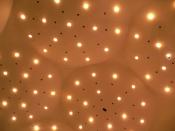Before the title essay is attempted, it is necessary to provide the reader with a brief summary of the book in which these two authors, Herrnstein and Murray analyse Intelligence and Class Structure in American Life. After which the classic Psychometric View of Intelligence will be discussed and alternative and competing theories of Intelligence will be outlined. Finally, the significance of the book in relation to its underlying assumptions will be commented on.
.................................................................
"Enormous explanatory power" (Seligman, 1994), "Very sober, very through, and very honest book" (Sowell, 1995), "incarnation of biological determinism"(Rawat). These could be the answer to the question; "Describe The Bell Curve in just one sentence". Indeed, they are extractions from articles that make up just a few drops in the entire ocean of literature that has been generated in reply to one of the most controversial works of this decade. Unlike any other areas of Psychology, the nature v.
nurture debate in Intelligence has become equated with extremes of political viewpoints. And, certainly in 1994, the authors of The Bell Curve seem to have instigated a spiral of debate amongst the scientific (and non-scientific) community across the world.
The general aim of the publication was to analyse the class structure in American life, and thereby illuminate the factors that they, (the authors) believe account for and successfully explain the increasing divide between the 'Cognitive Elite', at the extreme right of the statistical bell curve and the emerging 'Underclass' at the extreme left. This, according to Herrnstein and Murray, this is the way in which American society is shaped - in a symmetrical, normal distribution which houses majority of it's population in the middle portion of the curve.
Indeed many human characteristics such as 'height' and 'weight' fit the curve well, and these characteristics are commonly known...



Well done
I think this a well-written paper. You guided the paper with great strength. I see you took time to brainstorm ideas, good work.
1 out of 1 people found this comment useful.